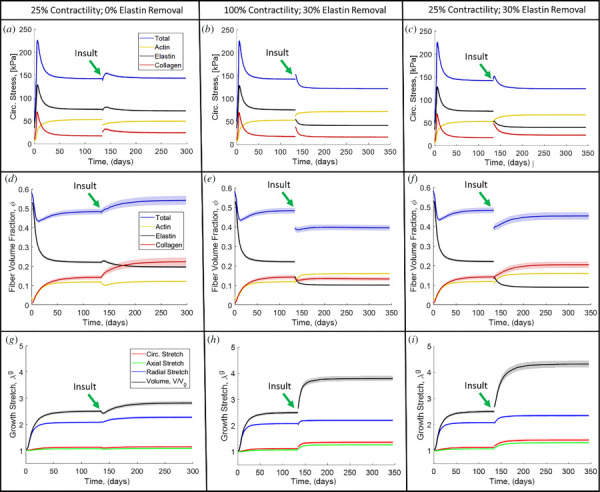Fig. 10.

(a) Circumferential stress evolution for contractility reduced to 25% of normal with no elastin removal. (b) Circumferential stress evolution for normal contractility with 30% elastin removal. (c) Circumferential stress evolution for contractility reduced to 25% of normal with 30% elastin removal. (d) Fiber volume fraction evolution for contractility reduced to 25% of normal with no elastin removal. (e) Fiber volume fraction evolution for normal contractility with 30% elastin removal. (f) Fiber volume fraction for contractility reduced to 25% of normal with 30% elastin removal. (g) MLU growth for contractility reduced to 25% of normal with no elastin removal. (h) MLU growth for normal contractility with 30% elastin removal. (i) MLU growth for contractility reduced to 25% of normal with 30% elastin removal. Solid lines are means and the shaded region is 95% confidence interval for N = 8.
